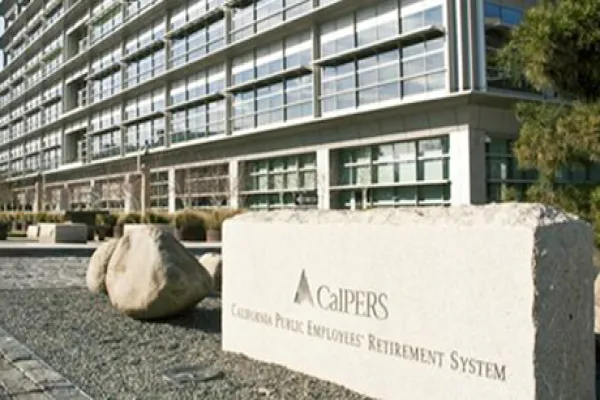The instant liquidity meltdown of Thursday May 6 will likely never be forgotten, and who knows, it might never be fully understood. Computer glitches, fat fingers, perfect storms, some sinister-clever stunt, Salem-witch-trial-era hysteria, any or all of these factors colluding perhaps in one spontaneous swirl of insanity stretching across many cyber realms, jurisdictions and offices.
Many traders and portfolio managers are busy steeling themselves for what could be another volatile week (stocks soared Monday morning) to care too much about how fallout from the mysterious swing might impact the complex U.S. equity market structure. It’s a game board that gets reshaped in some way almost weekly.
In the past decade, the trading of stocks evolved from an activity mainly reliant on humans to one mainly done by machines. But before examining how a backlash to a mini crash could slow down the electronic trading world the way the oil spill in the Gulf might slow down offshore drilling, a recap:
The frightening, mid-afternoon meltdown, in which the Dow shed more than 600 points in about eight minutes en route to a record intraday decline of 999 points, has stoked debate over so-called high frequency trading and even pitted two exchange chiefs against one another. The NYSE Euronext’s Duncan Niederaurer, in a CNBC segment Friday alongside Nasdaq’s Bob Griefeld, sniped about Nasdaq machines blindly set to autopilot after Griefeld likened the NYSE’s temporary halt to trading as a broker hiding under his desk in a crash. Although possibly forgetting NYSE’s subsidiary NYSE Arca, an all electronic liquidity venue, Neiderauer’s chastizing of automation overkill definitely scored points with his floor denizens, the most vocal critics of the vulnerabilities of a market too beholden to computers.
On the day of the meltdown, at about 2:40 p.m., the NYSE stopped trading Procter & Gamble after a big order came into the exchange. Because the price of P&G shares had dropped so preciptuously, the NYSE’s circuit breakers kicked in. The momentary halt of trading in P&G, and some other Big Board stocks, in and of itself was a crucial part of the epic chain of events cascading into the hardcore panic selling followed by an equally sudden snapback, but the real question still remains: what instigated the giant P&G sell order?
The rumor that went around Wall Street last Thursday held this: a Citigroup trader committed human error, punching in some extra zeros, resulting in an accidental $16 billion (or $15 billion, depending on the version of the tale) sell order; and the rumor ended up on CNBC. But it was not P&G that the supposedly fat fingered Citi trader botched, per the rumor that went around Wall Street as fast as any intermarket sweep order. Two versions of the Citigroup/fat finger tale, told to a trader I know (Scott Redler at T3) who heard it from two separate hedge fund traders, involved S&P 500 futures, the e-mini contract which trades on the CME Globex. And, went the tale, since P&G was such a large component of the S&P, computers programmed to pay attention to the futures market took their cue, and that’s when the P&G order hit the NYSE and chaos ensued.
The major problem with this scenario so far is that both Citigroup and the CME have come out with statements strongly denying any role in this episode, asserting that having looked into the situation they found no evidence of either event.
However the rumor got started, and regardless of whether it was true, we should not underestimate the role that the “instant narrative” played in the snap back, said to be as sudden and panicked as the selloff.
Steve Starker who runs an execution-only brokerage, BTIG, described the several minutes of frenzied trading on Thursday, in which he and around 200 traders, phones held to both ears, were screaming out sell orders and taking in sell orders chaotically. But then, around 2:48 p.m., a quiet took hold. Trading stopped on a dime, all at once, like a school of pilot fish instantaneously avoiding a coral reef, and what was followed was panic buying, as Starker had never seen.
If computers had overrun the humans on the way down, it’s likely that similiarly they drove the market up, with the same type of automation kicking in, sweep orders, automatic buys prompted by rock bottom levels, not unlike the auto selling on the way down. But without the embellished tale of fat fingers – without humans spreading gossip like Desperate Housewives on crystal meth – who knows where the market would have ended up. Regulators should remember this when they go to tinker with the market structure. How could flash rumors in a marketplace be regulated? They can’t? Oh okay. I’m not saying there’s no need for any action, but the market structure in place now, love it or fear it, resulted from tinkering ten years ago meant to level the playing field for small investors and put an end to the specialists domination on the floor of the NYSE.
Rulemakers need beware of unintended consequences and be cognizent of the lessons embedded in the Serenity Prayer -- accept the things that can’t be changed, have the strength to change the things that can, and display the wisdom to know the difference.







